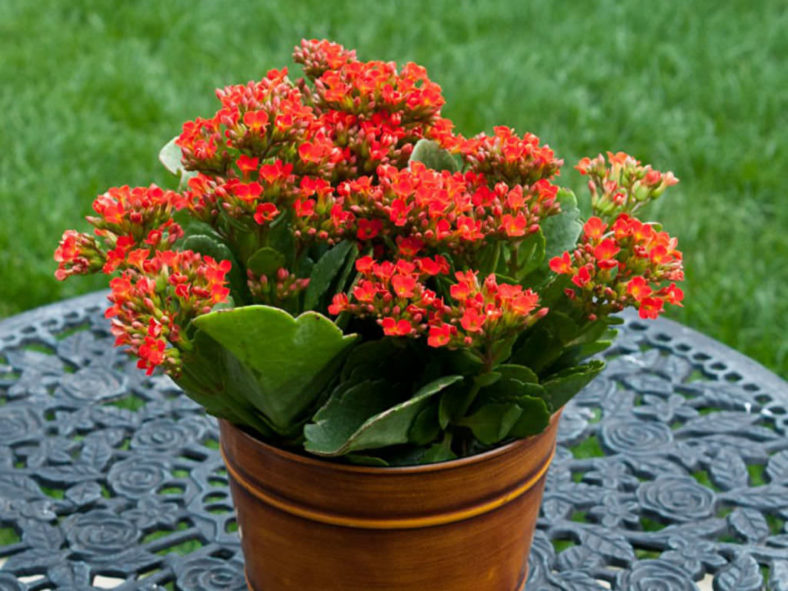Kalanchoe is a genus that includes about 125 species, but only a few are regularly seen in cultivation. Kalanchoes are native to arid areas. Modern hybrids are valued for their interesting leaf-forms or their flowers.
Flowering Kalanchoes are available in red, pink, yellow, or white. Like most succulents, these are not difficult plants to grow if you are careful with the water, especially in winter.
Growing Conditions
Light: They prefer bright, sunny locations, especially in the growing season.
Water: Water moderately in spring and fall when the growth is most active. Reduce watering during the hottest summer months when the plants are mostly dormant and winter when the growth slows down significantly. Let the soil surface dry out between waterings. Watch the fleshy leaves for signs of water distress.
Temperature: Do not let temperatures fall below 55 ºF (12.7 ºC).
Soil: Well-drained, light soil, one suitable for succulents.
Fertilizer: Feed bi-weekly during the growing season with a liquid fertilizer or use slow-release pellets.

Grower's Tips
Kalanchoe care is minimal, but be cautious about light levels. Intense sunlight can burn the tips of the leaves. Therefore, when growing Kalanchoes, place pots in partial sun to light shade areas.
The flowering varieties (Kalanchoe blossfeldiana) are highly rewarding for their colorful and long-lasting flowers. Many people discard the plants after the bloom is over, but this is unnecessary. Simply cut off the flowering head, let the plant rest with reduced water, and resume its regular care. It should flower naturally in spring. Professional growers force Kalanchoes to bloom throughout the year (they are short-day plants). The two pendant Kalanchoes make excellent hanging plants.
Repotting
These small plants require repotting every few years. When repotting, take additional care in handling, as the leaves are somewhat brittle and can snap easily. Clay pots work exceptionally well for planting Kalanchoes. Ensure pots drain well and saucers empty easily.
After planting, water thoroughly to settle the soil and fill air pockets. Keep the plant on the dry side for active growth and continuous bloom.
Propagation
Many Kalanchoes will produce tiny plantlets along the leaf margins that can be individually potted up. These include Kalanchoe pinnata and Kalanchoe beharensis. The more popular Kalanchoe blossfeldiana and Kalanchoe manginii can be propagated by leaf cuttings or tips.
Source: about.com
Links
- Back to genus Kalanchoe
- Succupedia: Browse succulents by Scientific Name, Common Name, Genus, Family, USDA Hardiness Zone, Origin, or cacti by Genus